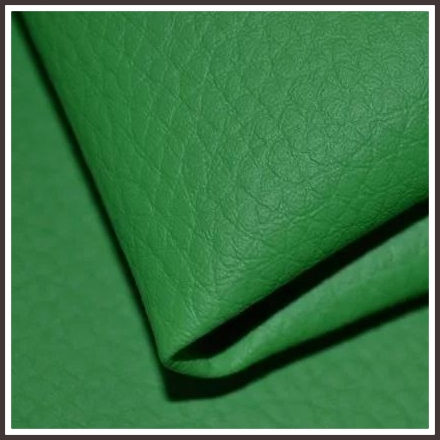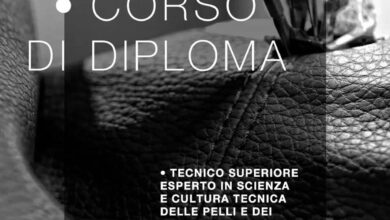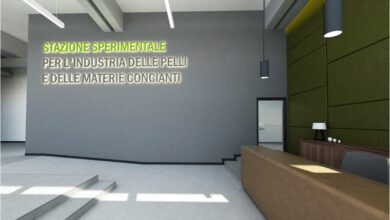Jan 25 2024
/
Conciare conviene! La circolarità della produzione di cuoio
Conciare conviene! La circolarità della produzione di cuoio
Negli ultimi anni alcuni stakeholder dell’industria del Fashion e Automotive stanno mettendo in discussione il paradigma di circolarità alla base del settore conciario, ovvero che le concerie sono trasformatori di un sottoprodotto dell’industria alimentare con conseguenti benefici di natura ambientale. Studi quali “Circumfauna” su iniziativa di Collective Fashion Justice, concludono, infatti, che dal punto di vista della sostenibilità risulta più conveniente non lavorare le pelli, ma inviarle in discarica e sostituirle con materiali alternativi (es. sintetici) [1].
Come è noto, dalle pelli grezze derivanti dalla macellazione, solo una parte viene destinata alla lavorazione del cuoio; gli strati non nobilitabili attraverso le lavorazioni conciarie sono utilizzati in altri settori industriali per la produzione, ad esempio, di gelatine, prodotti destinati alla cosmetica o all’agricoltura (fertilizzanti). Come riportato nel “Business case” pubblicato dal Markets Institute (World Wildlife Fund – WWF) [3], se le pelli grezze non fossero recuperate per la produzione di cuoio, il loro smaltimento in discarica comporterebbe il rilascio di gas serra [3] quali l’anidride carbonica e il metano, con conseguente impatto sull’ambiente. Il mancato riuso delle pelli grezze, di converso, comporterebbe la produzione di materiali da rivestimento alternativi. Tali materiali sono spesso identificati come “pelli” vegane, prodotte in molti casi da plastica, ovvero da materie prime derivanti da combustibili fossili [3].
La domanda a cui si vuole rispondere è: la produzione di cuoio è effettivamente un processo con bilancio positivo dal punto di vista ambientale? Oppure è più conveniente sostituirla con materiali alternativi e smaltire in discarica le pelli grezze dopo la macellazione?
A tale quesito è già stata data risposta nell’articolo del “Would it really be better to let hides rot than turn them into leather? No…“ di Leather Trade House pubblicato sul proprio sito leatheruk.org [2]. Nell’articolo viene ripreso il calcolo sulle emissioni di anidride carbonica eseguiti da Circumfauna [1], correggendo alcuni valori di CO2 emessa considerando il reale peso delle pelli grezze ed effettuando considerazioni sulla formazione di metano nei processi di degradazione della pelle in discarica.
In termini di bilancio di CO2 emessa la mancata valorizzazione conciaria di parte delle pelli grezze comporterebbe la sostituzione del cuoio con un materiale alternativo e lo smaltimento delle pelli, ovvero dovremmo confrontare la CO2 emessa per la produzione conciaria con la somma della CO2 derivante dalla produzione del materiale alternativo con quella legata allo smaltimento. Entrando nel dettaglio dei valori (escludendo per semplicità le emissioni derivanti dall’allevamento che sarebbero sempre presenti) e considerando come valido il bilancio che tiene conto esclusivamente della porzione di pelle grezza utilizzata nelle lavorazioni conciarie, i valori di CO2 [2] emessi per lo smaltimento in discarica, di produzione di pelli sintetiche [1] e di cuoio sono i seguenti:
- Emissioni da smaltimento in discarica della pelle: 4,08 – 8,78 kg CO2e/m2 [2]
- Emissioni per la produzione di pelle sintetica: 15,8 kg CO2e/m2 [1]
- Emissioni per la produzione di cuoio: 7,0 – 17,0 kg CO2e/m2
Nei dati riportati per le emissioni per smaltimento in discarica il valore massimo di 8,78 kg di CO2e tiene conto dell’impatto derivante dalla produzione di metano nel processo di degradazione della pelle in discarica. Inoltre, il valore riportato nello studio Circumfauna sulle emissioni di CO2 è superiore a quanto calcolato dalla SSIP in alcuni studi effettuati su concerie tipo per la produzione di pelli automotive metal free e pelli al cromo per calzatura, per le quali sono state rilevate emissioni reali comprese tra 7,0 e 11 kg CO2e/m2. In tabella 1 è schematizzato il confronto tra la produzione di pelle con l’alternativa proposta di smaltimento in discarica e sostituzione con altro materiale da rivestimento, includendo valori minimi e massimi per quanto riguarda i dati di smaltimento e di produzione del cuoio.
| PROCESSO | CO2e/m2 (min) | CO2e/m2 (max) |
| Smaltimento in Discarica | 4,08 | 8,78 |
| Produzione di sintetico alternativo | 15,80 | 15,80 |
| Totale | 19,88 | 24,58 |
| Produzione di Cuoio | 7,0 | 17,0 |
Si evince ancora una volta che la lavorazione conciaria risulta effettivamente un processo con benefici dal punto di vista ambientale. A ciò si aggiunga, come affermato nel Business Case del Markets Institute [3], che dal punto di vista della circolarità la pelle può essere riciclata e riutilizzata e presenta durabilità superiore in confronto a molte alternative sintetiche.
[1] https://circumfauna.org/leather-carbon-footprint
[2] https://leatheruk.org/would-it-really-be-better-to-let-hides-rot-than-turn-them-into-leather-no/
English Version
Tanning pays off! The circularity of leather production
In recent years, some stakeholders in the Fashion and Automotive industries are questioning the circularity paradigm underlying the tanning sector, i.e. that tanneries are processors of a by-product of the food industry with consequent environmental benefits. Studies such as “Circumfauna” on the initiative of Collective Fashion Justice conclude, in fact, that from a sustainability point of view it is more convenient not to process the skins, but to send them to landfill and replace them with alternative materials (e.g. synthetic) [1].
As is known, from the raw hides deriving from slaughter, only a part is destined for leather processing; the layers that cannot be refined through tanning processes are used in other industrial sectors for the production, for example, of jellies, products intended for cosmetics or agriculture (fertilizers). As reported in the “Business case” published by the Markets Institute (World Wildlife Fund – WWF) [3], if raw hides were not recovered for leather production, their disposal in landfill would lead to the release of greenhouse gases such as carbon dioxide carbon and methane, with consequent impact on the environment. Failure to reuse raw hides, on the other hand, would lead to the production of alternative covering materials. These materials are often identified as vegan “leathers”, produced in many cases from plastic, or from raw materials deriving from fossil fuels [3].
The question we want to answer is: is leather production actually a process with a positive balance from an environmental point of view? Or is it more convenient to replace it with alternative materials and dispose of the raw hides in landfill after slaughter?
This question has already been answered in the article “Would it really be better to let hides rot than turn them into leather? No…” by Leather Trade House published on its website leatheruk.org [2]. The article takes up the calculation on carbon dioxide emissions carried out by Circumfauna [1], correcting some values of CO2 emitted by considering the real weight of the raw hides and making considerations on the formation of methane in the degradation processes of the hide in landfill.
In terms of the CO2 balance emitted, the lack of tanning valorisation of part of the raw hides would lead to the replacement of the leather with an alternative material and the disposal of the hides, i.e. we would have to compare the CO2 emitted for tanning production with the sum of the CO2 deriving from the production of the alternative material with that linked to disposal. Going into the details of the values (excluding for simplicity the emissions deriving from farming which would always be present) and considering as valid the balance related exclusively to the portion of raw hide used in tanning processes, the CO2 values [2] emitted for the disposal in landfill, production of synthetic leather [1] and leather are as follows:
– Emissions from landfill disposal of hides: 4.08 – 8.78 kg CO2e/m2 [2]
– Emissions for the production of synthetic leather: 15.8 kg CO2e/m2 [1]
– Emissions for leather production: 7.0 – 17.0 kg CO2e/m2
In the reported data for emissions for landfill disposal, the maximum value of 8.78 kg of CO2e considers the impact deriving from the production of methane in the degradation process of hides in landfill. Furthermore, the value reported in the Circumfauna study on CO2 emissions is higher than that calculated by the SSIP in some studies carried out on typical tanneries for the production of metal-free automotive leather and chrome leather for footwear, for which the real emissions on the entire process have been quantified between 7.0 and 11.0 kg CO2e/m2. Table 1 summarizes the comparison between leather production with the proposed alternative of disposal in landfill and replacement with other upholstery material, including minimum and maximum values regarding the disposal and production of leather data.
| PROCESS | CO2e/m2 (min) | CO2e/m2 (max) |
| Landfill disposal | 4,08 | 8,78 |
| Production of alternative synthetics | 15,80 | 15,80 |
| Total | 19,88 | 24,58 |
| Leather production | 7,0 | 17,0 |
It can be seen once again that tanning is actually a process with benefits from an environmental point of view. Add to this, as stated in the Markets Institute Business Case [3], that from a circularity point of view, leather can be recycled and reused and has superior durability compared to many synthetic alternatives.
A cura di
Ing. Rosario Mascolo – Coordinatore Tecnico-Scientfico Dipartimento Sviluppo Prodotto
Hanno collaborato: Dott. Gianluigi Calvanese – Dott. Marco Nogarole
Pubblicato il 25 gennaio 2024 ore 17.22 – Aggiornato il 7 febbraio 2024 ore 15.02

Related Posts

Balducci: “La Stazione Sperimentale Pelli rende le imprese più forti”
Il presidente intervistato dalla rivista Arsutoria: “La Stazione Sperimentale deve essere in prima linea per rendere…

Accordo Stazione Pelli-Enea per un settore conciario più sostenibile
Identificare processi produttivi innovativi a ridotto impatto ambientale nel settore dell’industria conciaria, anche con un…

MIA Fondazione ITS: al via il corso per formare tecnici esperti in pelli e nuovi materiali
E’ incominciato il 28 dicembre 2018 a Solofra, presso l’Istituto “G. Ronca”, il corso formativo “Tecnico…

Nel Comprensorio Olivetti il nuovo Headquarter della Stazione Sperimentale
Dal 18 Febbraio è operativa la nuova sede della Stazione Sperimentale Industria Pelli presso un…
